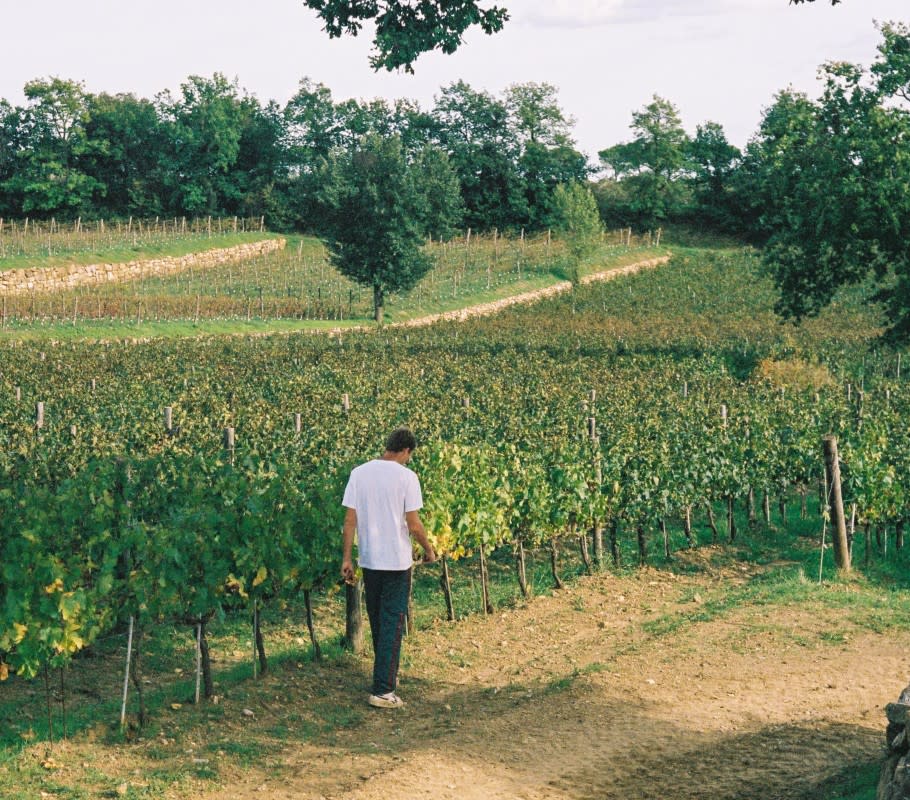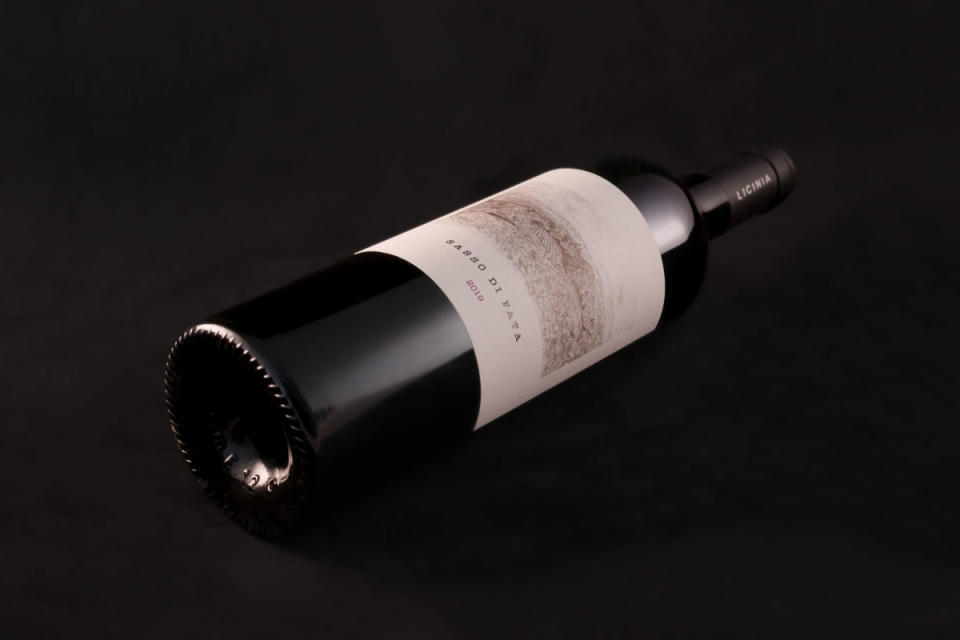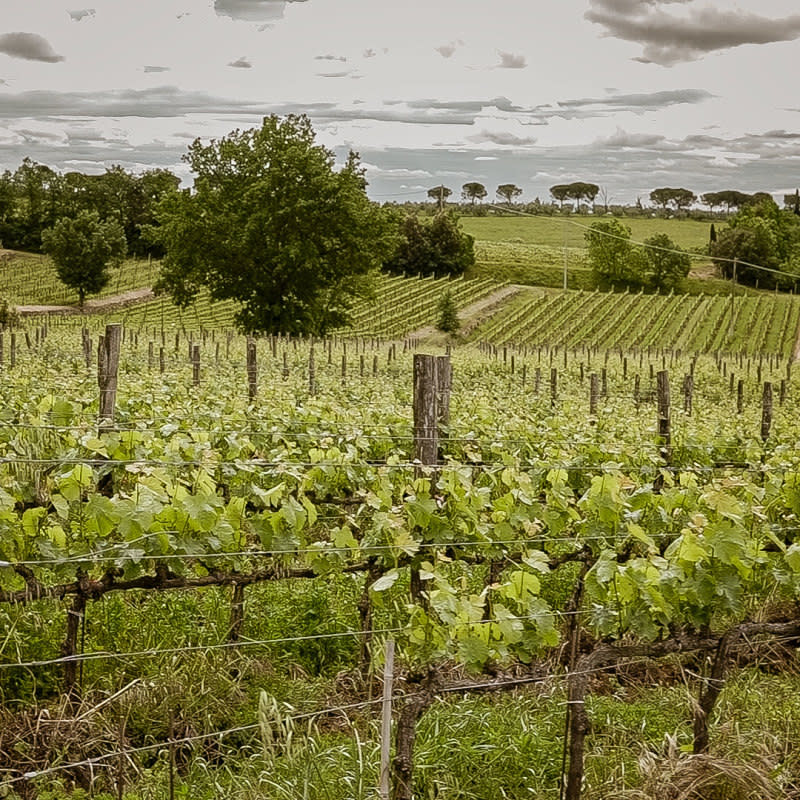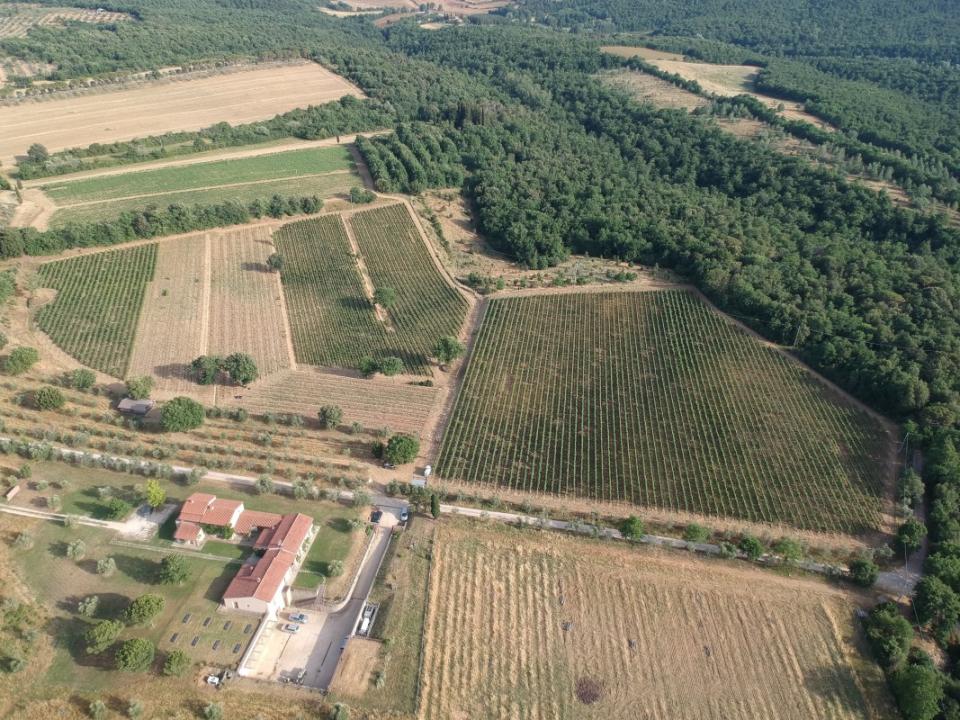From Philosophy to Terroir: A Young Winemaker Focuses on Single Vineyard Wines
In the 1970s, when Belgian lawyer Jacques de Liederkerke purchased property in Tuscany and planted a small vineyard, he did not think much about the subsoils. Having grown up in the days of industrialized Chianti and with little knowledge about winemaking, he bought the property because a neighbor told him it had been a good vineyard in the past. He restored the abandoned farmhouse but did not do much with the vineyard for 20-30 years. In 2007, as a retirement project, he decided to replant his vineyard (Sasso Di Fata) and because he was French-Belgian, he replanted it with Cabernet Sauvignon, and Tenuta Licinia was born. However, the potential of the vineyard was never fully recognized until third-generation James Marshall-Lockyer arrived in 2019.

Courtesy of Tenuta Licinia
James Marshall-Lockyer arrived at Tenuta Licinia while finishing his doctorate at Oxford University. His Doctoral Thesis on the Nature of Normative Reasons focused on the foundations of ethics and sensorial value. Clearly, his studies did not have a direct connection to wine. But James, who is a self-taught winemaker and who has had good mentors, found his doctoral studies useful. “It motivated me to think carefully about what kind of wine I want to make; what truly matters in the wine I make; what types of properties are relevant to making a high-quality wine.”
Tenuta Licinia is located on the hillsides of the Tuscan Apennines on the northern border of Valdichiana near the municipality of Lucignano in the province of Arezzo. When James arrived at Tenuta Licinia in 2019, he began to research the nature of various Tuscan subsoil/vine interactions to improve the quality of the wines. The motivating reasons behind the project were that there were no consistent terms and different definitions of Tuscan subsoils. And Tuscan subsoils vary, changing every 100 feet.

Sasso di Fata IGT
Courtesy of Tenuta Licinia
View the 2 images of this gallery on the original article
Both vineyards are certified organic and biodynamic, but James found that between Sasso di Fata and Montepolli, one vineyard has great subsoils, and one vineyard has decent subsoils. Sasso di Fata, a historic site, has lime-slate subsoils. The slate is paper-thin and viable, and the roots go through it. The result is a wine with floral aromas, fine-grain tannins, and a savory saline finish. The Montepolli subsoil is clay-limestone which results in wines with muted aromas and more massive tannins.
In tasting the 2019 wines, the differences between the two vineyards are apparent. The Montepolli IGT Toscana Rosso 2019, a blend of 47% Merlot, 22% Cabernet Sauvignon, 19% Cabernet Franc, and 12% Petit Verdot, and aged for 15 months in second passage French oak Tonneau, has aromas of cherry, strawberry, florals, and baking spice with good complexity, fine tannins, and minerality on the finish. In comparison, the Sasso Di Fata IGT Toscana Rosso 2019, a blend of 70% Cabernet Sauvignon, 25% Cabernet Franc, and 5% Petit Verdot, and aged for 16 months in second passage French oak Tonneau (500L), has aromas of rose petals, cassis, red fruit, licorice, and spice with gentle tannins and a long mineral finish.
The 2019 vintage, which James did not make but did blend and age the wines, was the first vintage where he started to find the identities of the vineyards. Tasting the 2021 Sasso di Fata IGT Toscana Rosso, James’ first vintage as the winemaker, the potential of site-specific Cru wines is evident. A blend of 55% Cabernet Sauvignon, 35% Merlot, and 10% Cabernet Franc, and aged ten months in second passage French oak Tonneau (500L.), the wine is lush with red fruit, plum, rose petal, and spice aromas and an elegant finish balancing minerality, salinity, and tannins.

Courtesy of Tenuta Licinia
James’ goal now is to identify forgotten and abandoned parcels and bring them back into production, specifically in a part of Tuscany where fine wine production largely disappeared in the 20th century. He climbs fences in search of abandoned vineyards he can resuscitate back to high-quality production. Working with a patchwork of tiny vineyards across an 18-mile area, James is seeking the best plots with particular subsoil structures. The newest vineyard he acquired was in 2022. Montalceto, planted to 20-year-old Sangiovese vines, was in poor shape and James has brought the vineyard back to life, converted it to organic viticulture, and produced a wine in 2023.
James has found his calling, working in the vineyards, and studying subsoils. His forward-thinking and conscientious approach in the vineyards proves that terroir and subsoil are not a myth.

Courtesy of Tenuta Licinia

